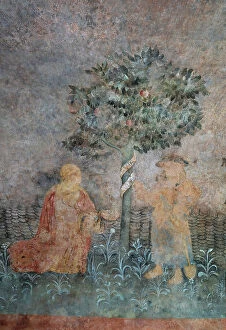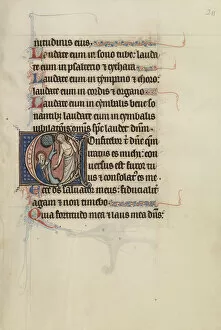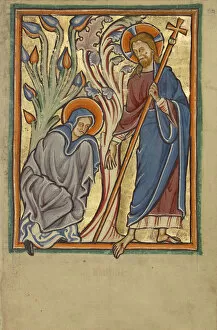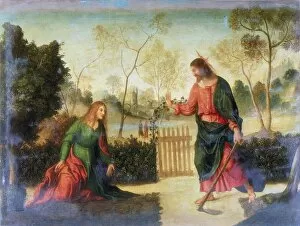Tangere Collection
"Noli Me Tangere: The Divine Encounter of Jesus and Mary" In this captivating fresco, located in the Eglise Saint-Jean-Baptiste in Chaource, Aube, France
All Professionally Made to Order for Quick Shipping
"Noli Me Tangere: The Divine Encounter of Jesus and Mary" In this captivating fresco, located in the Eglise Saint-Jean-Baptiste in Chaource, Aube, France, we witness a profound moment between Jesus and Mary Magdalene. Painted by Giulio Romano, an esteemed Italian painter from the 16th century, this artwork depicts the scene known as "Noli me tangere, " meaning "Do not touch me" in Latin. The diptych named Latino showcases scenes from Christ's Passion, including Noli me tangere and Judas hanging himself. Crafted delicately on ivory, it portrays the intense emotions surrounding these pivotal events. Interestingly enough, there is a plant called Touch-me-not balsam or Impatiens noli-tangere. Its name alludes to the biblical story where Jesus forbids Mary Magdalene from touching him after his resurrection. Nature also offers us Chara haitensis—a species of green algae that thrives underwater. Just like its name suggests—Chara haitensis does not want to be touched or disturbed. Stained glass windows often tell stories through vibrant colors and intricate designs. One such window beautifully captures Noli me tangere—the divine encounter between Jesus and Mary Magdalene—an awe-inspiring moment frozen in time. An initial C found within Bute Master Franco-Flemish's work features Noli me tangere as well—a testament to how deeply ingrained this biblical event was within artistic expressions during that era. Alessandro Magnasco brings forth his Italian Genoese perspective with his painting titled Noli Me Tangere Norfolk—perhaps inspired by East Anglia's rich cultural heritage. Ludwig of Ulm adds another layer to our understanding with his hand-colored woodcut depicting Noli me tangere—an art form that transcends time and language barriers to convey spiritual significance across generations.



















